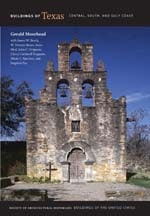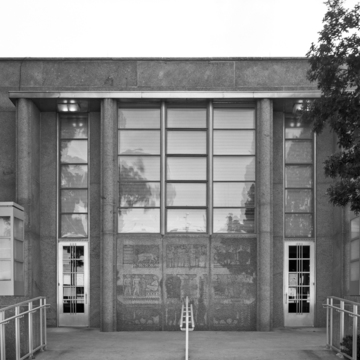Constructed with Public Works Administration (PWA) funds of the same Texas pink granite used for the State Capitol ( AU1), the courthouse was designed by Houston-based Wirtz in the Moderne style he used for the Guadalupe County Courthouse ( SF1). The east entrance to the flat-roofed, two-story building features nine etched-granite panels designed by Wirtz depicting Burnet County's history and economy.
On the northeast corner of the courthouse square is the third county jail (1884, F. E. Ruffini). The rock-faced limestone walls contrast with the smooth, dressed-stone quoins, shawl lintels, and entrance portal. A metal cornice with brackets supports a low-pitched mansard roof. Ruffini designed similar jails in Collin County (1882) and Comal County (1878).





















